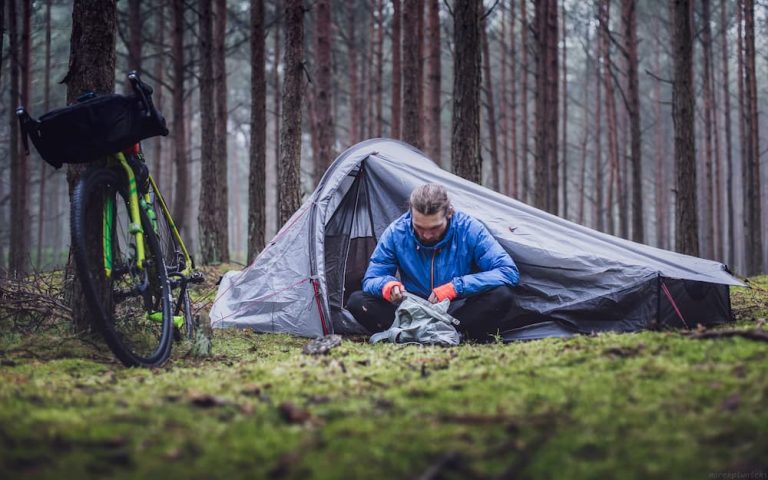How To Build Bicycle Cargo Trailer For Plywood?
Is it possible to transport plywood on a bicycle? Consider the following scenario. You don’t have any vehicles to move your plywood from one location to another. Alternatively, even if you own a car or a truck, the plywood may not fit, or employing such vehicles may be prohibitively expensive.
So, having a bike for this purpose is the only practical choice. So, let’s see how to carry plywood on a bicycle!
Contents
How to Build a Bicycle Cargo Trailer for Plywood?
One of the most significant issues with plywood is its size. Even though most plywood sheets are 4 x 8 feet in size, it can be both a beneficial and painful experience. Furthermore, whichever mode of transportation is used must be transported with caution to avoid injury, damage, or accidents.
Using a trailer attached to a bike is one of the most convenient ways to transport plywood. If you don’t already have one, the only other alternative is to make one. So, how about we investigate how to assemble a trailer for hauling plywood on a bicycle?
Not many trailers are suitable for carrying plywood on a bike. So, let’s see how we can build one in some simple steps.
Putting the Frame Together
At first, you have to put the frame together in a couple of steps. This is the initial step that has to be executed carefully.
Draw a Trailer Layout with Measurements
Of course, the first thing you need to figure out is what you’ll be transporting with your trailer. Of course, we’ll show you the measurements for hauling the plywood in this scenario. After you’ve determined the plywood’s size, draw a rough outline of the trailer and record its dimensions.
The next step is to get a set of matching wheels for the trailer. Measure the area where you’ll be drilling to attach them once more.
Trimming the Frame’s Lumber
In this portion, either a power saw or a hand saw will suffice. Make a proper cut in the timber for the width, as well as the front and back, of your trailer. Make an additional cut on the lumber for the length as well. However, remember to account for the front and rear pieces that will cap the side pieces when cutting.
You can have the lumber pre-cut at your local lumberyard for greater precision. Because the wheels will be fastened between them, you’ll need four extra-long pieces for the sides of the frame.
The Frame’s Layout
Place the parts in a flat place, such as your workbench. 2 side pieces should be placed in a square or rectangle configuration with the front and back parts. Use the other two side pieces on the inside and outside the frame, keeping them parallel.
Then, with the axles of the wheels above the wood, space the side pieces so that you can put the bicycle wheels between them. Again, you can seek trailer wheels in your local thrift shops or used bicycle businesses.
Assembling the Frame
Metal brackets on either side are used to connect the two pieces of lumber perpendicularly. This can be accomplished with an electric drill. Drill the wood screws into the frame’s wood through the holes in the brackets. If you’re going to utilize metal brackets, ensure sure they have at least four screw holes. The trailers will be more stable as a result of this.
Replace the inner side sections of the frame where they meet the front and back of the frame and repeat the operation. According to our calculations, a total of 12 brackets will be required. As a result, you can prepare them ahead of time for your procedure.
Putting the Wheels Together
After you’ve built the frame, it’s time to put the wheels together. You might need some knowledge of working with metals before learning how to carry plywood on a bike.
Installing Wheels on the Frame’s Side Components
Bend four electrical box plate covers to fit on top of the frame’s side sections. Put one of them in a vice on the short side of the electrical box plate cover. Press the metal with a rubber mallet against the top of the vise until it forms a flat surface. Such an effort aims to keep it bent at a 90-degree angle. Apply the same procedure to the remaining three, and you’re done.
Drilling
Drill the axle holes up from the plate’s bottom edge. However, before drilling, take the necessary measurements. Drill a hole in the metal plates of the wheels next. To accomplish so, use the holes you drilled for the axles to place a metal plate on each side of the wheel’s axles.
You won’t have to worry about taking accurate measurements in this scenario. All you have to do is make sure the side holes are far enough apart from the upper ones to avoid the wood from intersecting. Bolt them up once they’re finished!
Attaching the Trailer Arms and Screwing the Metal Plate Brackets
With the wheels poking through the holes in the trailer frame bed, adjust the brackets on the top of the frame. Attach the wood screws to the frame you’ve constructed by driving them through the screw hole you made earlier.
Adding Trailer Arm
The next step requires you to add the trailer arm. You’d need an arm for the trailer and a hitch to attach it.
Trailer Arm and Hitch
There are a variety of bike trailer arms on the market. Alternatively, you can use the internet to search for bike shops. Alternatively, you may always find them at your local bike shop.
Unscrew the nut from the bike’s rear-wheel hub’s left side once you have the trailer. After that, place the hitch on the wheel’s axle and tighten the nut.
Attaching the Trailer Arm by Screwing and Connecting It
As much as possible, screw the outer portion of the frame with the arm on the trailer’s left side. You can use an electric drill to attach them to the frame by pushing the screws through the holes in the frame’s wood.
After you’ve done that, put the trailer’s arm into the hitch so you can connect them. Then, tighten all connecting components and secure the arm in place. And there you have it! You’ve finished making your trailer.
What to Keep in Mind
Cutting the sheet into strips has the advantage of making it easier to transport the plywood on the trailer. So, you can easily accelerate or brake whenever you choose. To avoid skidding, however, connect the strips to the trailer.
If you only need a single piece of plywood, you can carry it in your hand while sitting on the back of the bike. Hold it firmly and securely throughout the voyage to avoid it skidding away from your hand and causing harm.
If the piece of plywood is relatively small, you may be able to tie it down on the back seat. In either case, transporting them without a trailer is simple.
Conclusion
Based on our research, we can claim to you that carrying plywood on a bike is one of the most convenient methods we’ve come across. It’s easy to accomplish, and you don’t even need to buy a trailer if a neighbor or friend lends you one.
So, the time for fretting is over, as you’ve learned how to carry plywood on a bike through our guide.






